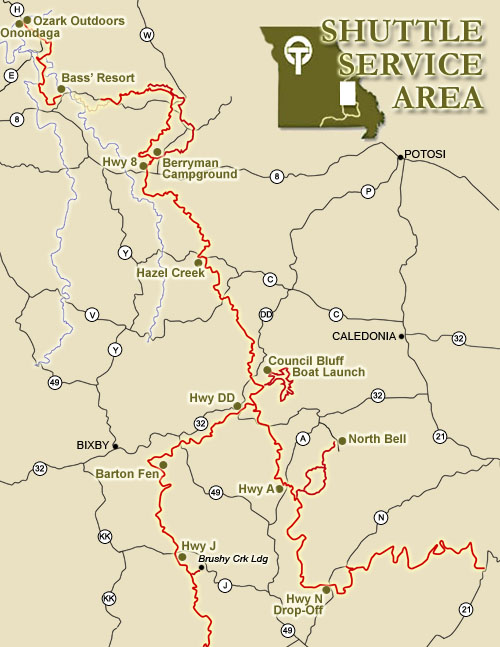this is the content
Category Archives: Backpacking
Layering for Beginners @ Backpacking Light
Backpacking and Hiking with an Umbrella
Backpacking and Hiking with an Umbrella
Navigating
Characteristics of an expert navigator: Introduction
Learning how to navigate was one of the most important and liberating skills that I have developed as a backpacker. On my earliest trips, when my navigation skills were at best rudimentary, I was unable to safely or confidently leave the security of obvious footpaths, foolproof blazes, and accurate signage. I also struggled to reliably […]

Characteristics of an expert navigator: Part I — Equipped with proper tools
This is Part I of a series on the characteristics of an Expert Navigator. Read the Introduction. More installments are forthcoming. Every “Ten Essentials” list I’ve seen has included a map and compass, and modern versions sometimes also include a GPS. If only the first characteristic of an expert navigator — being equipped with proper […]

Characteristics of an expert navigator: Part II — Proficiency in the understanding and uses of tools
This post is part of a series on the characteristics of expert navigators. I’d recommend first reading the Introduction and Part I, and then returning to this latest installment. Within a few days of starting my Appalachian Trail thru-hike in 2002, I began dead-reckoning using my watch and the Databook. With surprising accuracy, I now had […]
Clothing – Backpacking
http://andrewskurka.com/2013/clothing-system-for-backpacking-peak-mosquito-season/
http://andrewskurka.com/2015/backpacking-core-clothing-thirteen-3-season-conditions/
http://andrewskurka.com/2015/backpacking-clothing-go-suit-short-long-sleeve-shirt/
http://andrewskurka.com/2015/backpacking-clothing-go-suit-bug-shirt/
http://andrewskurka.com/2015/core-clothing-go-suit-running-shorts/
http://andrewskurka.com/2015/core-clothing-go-suit-pants-underwear/
http://andrewskurka.com/2015/backpacking-clothing-go-suit-fleece-top/
http://andrewskurka.com/2015/backpacking-clothing-stop-insulated-jacket-pants/
http://andrewskurka.com/2015/backpacking-clothing-rain-jacket-rain-pants/
http://www.mountainlaureldesigns.com/shop/product_info.php?products_id=66
Hike with Trekking Poles?
Manage Dinky Stuff
The No-Cook Trail Lunch
The No-Cook Trail Lunch
The No-Cook Trail Lunch
I have to admit that I am often lazy when it comes to making lunch on the trail. I don’t drag the stove out very often and in the warmer seasons I actually try to avoid the practice of a cooked lunch. Instead, I turn to fare that does not require cooking or heating. This can be anything from the traditional cheese, cured sausage, and crackers, to something more elaborate such as a trail salad.
Breakfast leftovers, such as biscuits, make a great lunch on the go especially if paired with some shelf-stable Brie or Camembert and a bit of nut-based pesto. Red pepper jelly and shelf stable cream cheese is delicious on crackers, as is a little olive and black pepper. Wraps are versatile for the no-cook lunch and are perfect for nut butters and other spreads.

©Laurie Ann March
Many foods, such as hummus and other dips, rehydrate quickly and easily when you break for lunch. You can buy commercially prepared powdered hummus but I like to make my own. Just use your favorite hummus recipe omitting the olive oil. Dry on lined dehydrator trays for 5 to 7 hours and then process in a blender until you have a fine powder. On the trail, add enough water to reach the consistency you like and stir in some olive oil while seasoning to suit your tastes. Such dips are delicious with crackers, leftover flatbread from dinner the night before, pitas, or even baby carrots. Dips also make terrific spreads for wraps and bagels. Roasted Eggplant Spread is delicious with foil pouched chicken and some trail grown sprouts.
If you have something like salsa that contains corn, you can start rehydration at breakfast time and let the ingredients reconstitute while you hike. I simply boil a little extra water when I make my coffee or tea. This eliminates the need to pull the stove out and can reduce overall fuel consumption. Salsa works well as a condiment for wraps or with your favorite brand of corn chips. It is also delicious on a bagel with some shelf-stable cheese or with tuna.
I mentioned foil-pouched chicken. This can be yummy in a wrap with some rehydrated peppers and broccoli, and a bit of shelf-stable ranch dressing.
Coleslaw is a great standby and dried, shredded cabbage comes back very quickly. Add some protein with a bit of freeze-dried chicken. While I have many recipes for trail salads one of my favorites is the Garbanzo Bean, Tomato and Thai Chili Salad.
Here are some recipes to get you started.
Greek Red Pepper Dip
from Another Fork in the Trail
Dehydration Time: 5–7 hours
Makes 2–4 servings
This hummus-like recipe was originally created for a wilderness-cooking workshop. I often create several dips and dry them. This way I can illustrate how easy it is to rehydrate this type of fare as a trail lunch without having to use a stove. The participants pass the dip around to munch on and this particular one always gets rave reviews.
1/3 cup roasted red peppers
1 19-ounce can chickpeas, rinsed and drained
3 tablespoons lime juice
2 cloves garlic
2 tablespoons tahini
1/4 cup feta cheese or 1 1/2 tablespoons capers
1/4 teaspoon dried oregano
Pinch of kosher salt
At Home
Roast the red peppers according to the instructions on page xref. Once they’ve cooled, peel them and chop them into 1/4-inch pieces. Combine all the ingredients in a food processor or large bowl if using a hand blender. Process them until you have a thick paste.
Spread evenly on lined dehydrator trays, keeping the mixture about 1/4 inch thick. Dry for 5 to 7 hours or until the mixture crumbles and is thoroughly dry. Store in a medium ziplock freezer bag.
At Camp
Rehydrate the dip using a formula of 1 1/2 parts dried mix to 1 part water. Wait 5 to 10 minutes then add a little more water if it’s too dry. Serve as a dip with Greek pitas or your favorite crackers or use as a spread in a wrap.
Tips
If you need to increase your fat intake for cold-weather hiking, drizzle a little olive oil on the hummus just before you eat it.
Fresh vegetables also make a great accompaniment for this dip.
Roasted Eggplant Spread
from A Fork in the Trail
Dehydration Time: 7–10 hours
Makes 2–4 servings
Rye bread or rye crisps are the perfect accompaniment to this flavorful spread; it’s also a nice condiment for wraps.
2 small eggplants – cut in quarters lengthwise
1 to 2 tablespoons olive oil
1/4 cup plain yogurt
2 tablespoons lemon juice
1 tablespoon fresh parsley, chopped
3 cloves garlic, minced
2 teaspoons lemon zest
1 1/2 teaspoons stone ground mustard
Salt and pepper to taste
At Home
Preheat the oven to 350°F. Place the cut eggplant in a baking dish and drizzle with olive oil. Roast the eggplants for a half hour, turning once halfway through roasting. Remove eggplants from oven and let them cool. Peel them once they’re cool enough to handle. Using a food processor or hand blender, combine all the ingredients until you have a well-blended purée.
Spread evenly on lined dehydrator trays, keeping the mixture about 1/4 inch thick. Dry for 7 to 10 hours or until the mixture is thoroughly dry.
At Camp
Rehydrate the spread using a formula of 1 1/2 parts dried mix to 1 part water. Wait 5 to 10 minutes and then add a little more water if necessary.

Thai Garbanzo, Tomato Salad © Laurie Ann March
Garbanzo Bean, Tomato, and Thai Chili Salad
from A Fork in the Trail
Dehydration Time: 8–12 hours
Makes 2 servings
Garbanzo beans, or chickpeas, have a buttery texture. This hearty and flavorful salad can be served warm or cold and goes well with flatbread.
1/3 cup onion, chopped
1 clove garlic, minced
2 or 3 fresh Roma tomatoes, diced
1 or 2 green Thai chili peppers, seeds removed and minced
1 tablespoon fresh ginger, peeled and minced
2 cups canned chickpeas (garbanzo beans), drained and rinsed
1 tablespoon lemon juice
1/3 cup lime juice
1 tablespoon fresh cilantro, coarsely chopped
1 1/2 tablespoons olive oil or vegetable oil
1 teaspoon black pepper, freshly ground
1/8 teaspoon kosher salt
At Home
Heat the oil in a frying pan over medium to medium-high heat. Add the onion and sauté for a minute. Then add the garlic and tomatoes and simmer for a few minutes, until the tomatoes start to reduce. Add the peppers and ginger and cook for a few more minutes. Next add the chickpeas and lemon and lime juice. Simmer for a few minutes and then remove from the heat.
Stir in the cilantro, salt, and pepper. Allow the mixture to cool and then measure the amount you will dry. Write this measurement on a sticky note. Spread the salad on lined dehydrator trays to dry. When the salad is dry, package it in a ziplock freezer bag along with your sticky note.
At Camp
Rehydrate the salad by adding enough boiling water to the mix to make it equal to the measurement on your sticky note. Do not add the water first or you will have too much liquid.
Tip
If you’d like, you can rehydrate this recipe in time for lunch by adding cold water to the mixture at breakfast and letting it rehydrate in your pack.
So, next time you are planning a trip menu take a close look and see if a no-cook lunch approach is better suited to your warm weather trips.
Bell Mountain, Missouri
|
BELL MOUNTAIN (NORTH LOT TO HIGHWAY A)
|
|
|
|
|
| MILE MARKER: | DESCRIPTION: | |
|---|---|---|
| 0 | Start at North Bell Trailhead.  (directions) (directions)North Bell Trailhead. About 1.8 miles down a gravel road off Highway A. Lot is on right and is signed. |
|
| North Bell Trailhead to Joe’s Creek North Connector – 2.4 miles | ||
| 2.4 | Continue straight past the Joes Creek turn-off toward the summit. | |
| Joe’s Creek North Connector to Bell Mountain Peak – 1.3 miles | ||
| 3.4 | Open glades that look for miles to the west– a great spot to catch a beautiful sunset. | |
| 3.6 | Along the north ridge of the summit you’ll find several informal paths that lead east to glades overlooking the St. Francis Mountains. Definitely a five-star view! | |
| 3.7 | Stop for a second and take in the view from the top of Bell Mountain. | |
| Bell Mountain Peak to Joe’s Creek South Connector – 1.6 miles | ||
| 5 | A stock pond can be found on the south side of the trail. | |
| 5.2 | At the ‘Y’ in the trail, keep to the left. | |
Mike C’s Ultralight video
http://andrewskurka.com/2012/tarp-guyline-system/























